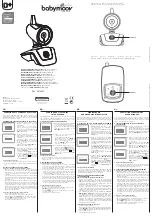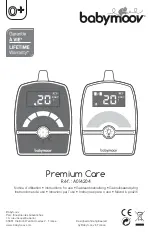
molbox™ RFM™ OPERATION AND MAINTENANCE MANUAL
© 1998-2007 DH Instruments, a Fluke Company
Page 22
Depending on the placement of the molbloc-S in relation to the DUT and other hardware, and
the availability and capacity of a vacuum pump that may be used, the molbloc-S downstream
pressure will vary in different applications. Calculating Re for different molbloc-S sizes and
flow rates, and estimating the choking ratio (maximum BPR limit) as a function of Re is
somewhat complex, so Table 5 is offered to give the minimum flow that can be achieved with
each molbloc-S size, without exceeding molbox BPR limits, when the molbloc-S downstream
pressure is known: In actual operation, molbox RFM calculates the Re and BPR ratio and
provides an indication of whether the BPR is adequate for measurements to be made.
3.1.3
FLOW READY/NOT READY INDICATION
The character to the left of the measured flow on the MAIN run screen provides a flow
Ready/Not Ready
indication. This indication is intended to provide the user with a clear and
objective indication of when a stable flow has been achieved.
Ready <*>
is indicated when the current stability (rate of change) of flow is less than the
stability limit. The user can set the stability limit (see Section 3.5.5). The
Ready/Not Ready
indication is often used when comparing molbox RFM and a test device to help determine
when steady state flow conditions are present so that a valid comparison reading can be made.
3.1.3.1
molbloc-L OPERATION
In molbloc-L operation, the
Ready/Not Ready
indication also helps guard against
using molblocs above their valid range by monitoring the Reynolds number of the
flow. If the Reynolds number of the current flow exceeds 1 300, the
Ready (<*>
)
indicator flashes. The current Reynolds number value can be viewed using
[P&T]
(see Section 3.4.5). If molblocs are used within the pressure and flow
range limits for the flowing gas and the pressure dependent calibration type (see
Section 1.2.4.1.2), a Reynolds number of 1 200 will never be exceeded (1 300 is
used as the warning limit to allow for individual molbloc differences).
Ready/Not Ready
character indications are:
<*>
Flow
Ready
(stable).
<*>
(Flashing): Reynolds number > 1 300.
<
↓
>
Flow
Not Ready
(unstable and decreasing).
<
↑
>
Flow
Not Ready
(unstable increasing).
3.1.3.2
molbloc-S OPERATION
In molbloc-S operation, the
Ready/Not Ready
indication is also used to warn the
user when the BPR (back pressure ratio) is too high to ensure critical flow (see
Sections 3.1.2). When the BPR is beyond the choking limit, molbloc-S flow
measurements may not be valid and the
Ready
indicator becomes
<P>
. The
Ready/Not Ready
indicators based on flow stability are also used in molbloc-S
operation, but the
<P>
indicator takes priority over other indicators.
Ready/Not Ready
character indications are:
<*>
Flow
Ready
(stable).
<
↓
>
Flow
Not Ready
(unstable and decreasing).
<
↑
>
Flow
Not Ready
(unstable increasing).
<P>
Flow
Not Ready
(BPR high / sub-critical flow)
















































